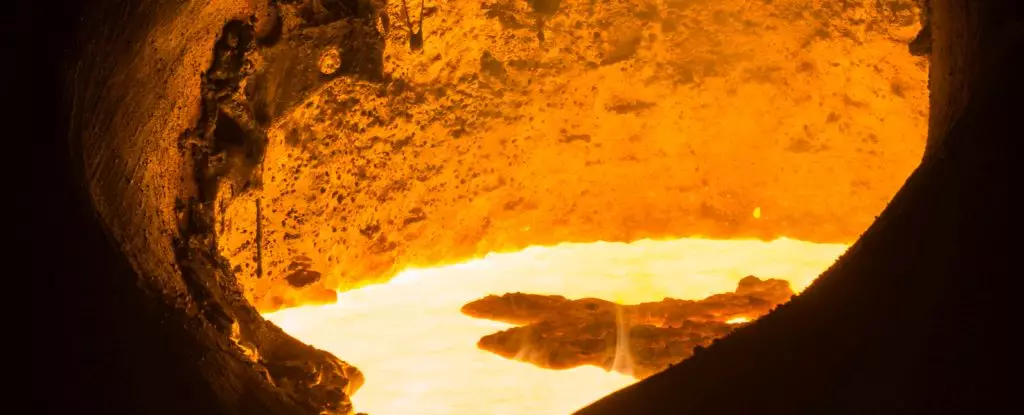When we think about Earth’s treasures, visions of shimmering gold and precious metals often flicker in our minds. What we fail to realize is that the most significant reserves lie not on the surface, but deep within the planet’s core, an area largely untouched and obscured from our understanding. Recent research has peeled back layers of geological mystery to shed light on a remarkable discovery: Earth’s core is not just a dense, metallic repository, but a dynamic source leaking raw materials, including gold and other precious metals, into the mantle. This development complicates our relationship with these materials and redefines our understanding of Earth’s geological activity.
Geochemist Nils Messling from Göttingen University waxes poetic about the implications of this study, exclaiming that they had “literally struck gold!” Such enthusiasm is well-justified; the findings signify more than just a gold rush for future generations. They herald a new frontier in planetary science, where the very structure of our home planet is revealing secrets that challenge our assumptions about the origins and distribution of precious metals on Earth.
The Iron Catastrophe and Beyond
Geological history tells a captivating tale of catastrophic formation. During the early stages of Earth, the phenomenon known as the “iron catastrophe” saw heavier elements sink into the planet’s molten depths. This vast repository now resides at the core, a nearly untouchable storehouse where over 99% of gold is said to reside. It’s staggering to think that this wealth, if spread across Earth’s landmass, would create a layer 20 inches thick – a potent reminder of nature’s capacity to hoard riches while keeping them hidden from sight.
The crux of recent studies hinges on the isotopes of ruthenium, a lesser-known yet vital element that points to the leakage from the core. Through rigorous examination of volcanic rocks in Hawaii, researchers have elucidated a crucial distinction between isotopes from the core and those sourced from cosmic debris. Ruthenium-100, in higher concentrations than its surface counterpart, hints that precious metals, including gold, are surreptitiously making their way up from the core. This revelation could provoke a paradigm shift in our understanding of not only Earth’s geology but also the processes that shape terrestrial and extraterrestrial bodies alike.
A Shift in Geological Paradigms
The implications of these findings transcend mere academic curiosity. In a world facing resource scarcity, understanding the dynamics of Earth’s core could shift our strategies on mining, conservation, and sustainable use of precious resources. If we can conceptualize that massive amounts of gold are still within reach, albeit inaccessible, our approach to resource management might evolve into a more sustained, long-term perspective rather than a feverish scramble for what lies superficially available.
Moreover, this research invites us to contemplate broader questions about planetary formation across the cosmos. If gold and other metals are leaking from cores on Earth, what could this mean for the prospects of finding resources on other rocky planets? In the rush to exploit resources, we must ensure that ethical considerations accompany advances. Such scientific insights should be a springboard for discussing the implications of seeking extraterrestrial wealth.
The Human Element: Ethics in Resource Extraction
With gold comes greed, and the historical narrative of resource extraction often carries tales of exploitation and disregard for ethical considerations. We are now at a crossroads punctuated with a pressing need for responsible stewardship of the Earth and its contents. If we stand poised to reclaim Earth’s hidden treasures, we must do so with mindfulness of the repercussions—ecological destabilization, socio-economic disparities, and geopolitics.
The challenge lies in harnessing scientific advancement in a manner that respects both the environment and social fabrics—ensuring that our legacy doesn’t mirror the greed-driven past but instead paves the way for equitable and sustainable practices. We must question: how can we leverage new geological discoveries to inform policies that prioritize both humanity and the Earth? This delicate balance could define our relationship with the planet and its treasures for generations to come.
Through continued inquiry and reflection on these discoveries, we can forge a deeper understanding of Earth’s mysteries while remaining vigilant stewards for the future.

Leave a Reply